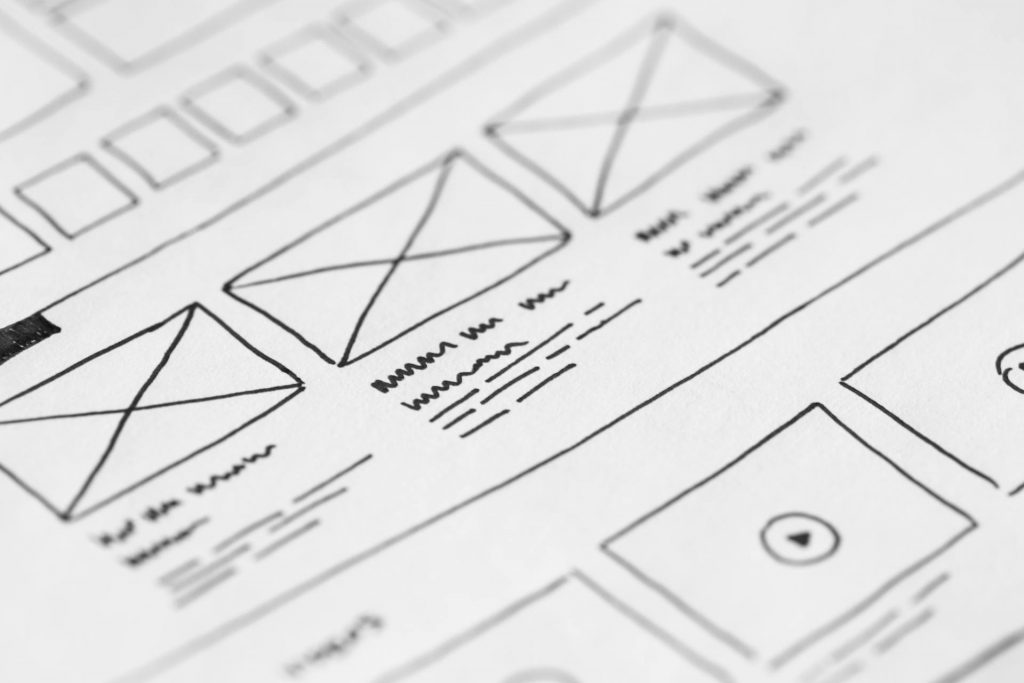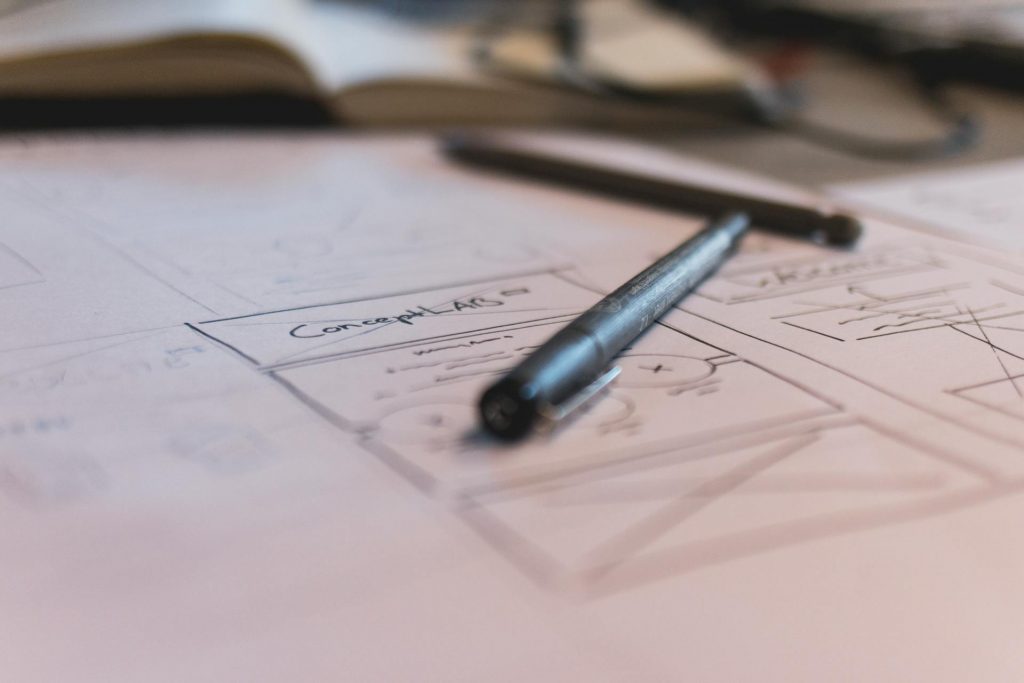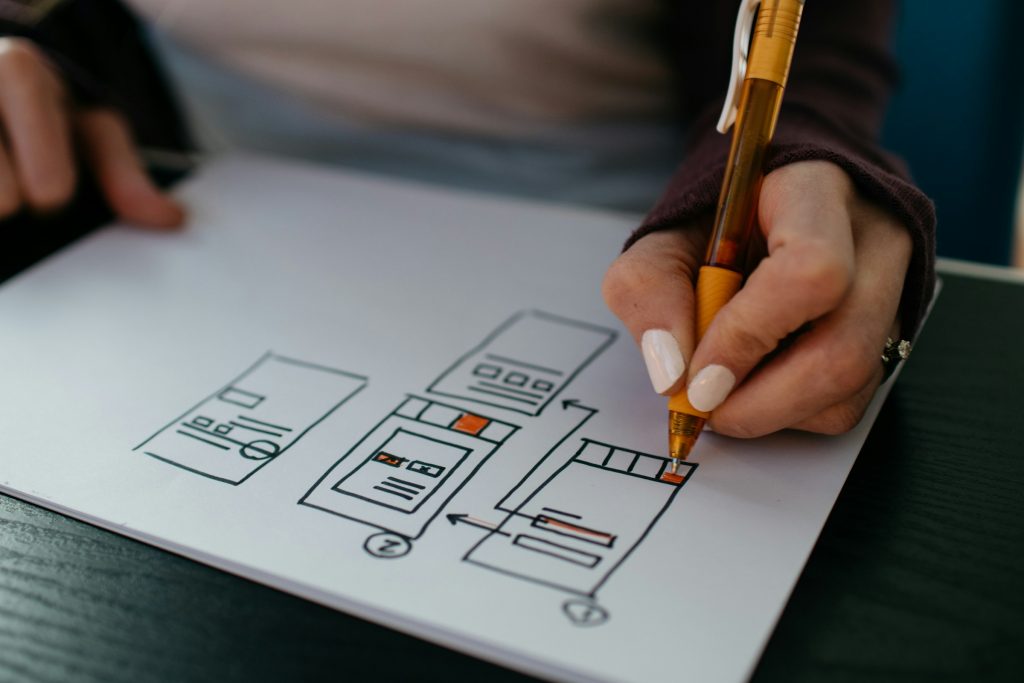Å skape fremragende programvare
La oss bygge noe ekstraordinært sammen.
Stol på Lasting Dynamics for enestående programvarekvalitet.
Luis Lambert
okt 15, 2025 • 13 min read

In today's digital-first world, the quality of user interface design has become a critical differentiator for businesses across all industries. As we navigate through 2025 and the upcoming 2026, the demand for professional user interface design services continues to surge, driven by the increasing complexity of digital products and the rising expectations of users. Companies are recognizing that a well-designed interface is not merely an aesthetic consideration but a fundamental business asset that directly impacts user satisfaction, conversion rates, and brand perception.
The stakes have never been higher for creating intuitive, accessible, and visually appealing interfaces. Research shows that 94% of first impressions are design-related, and 75% of users judge a company's credibility based on its website design. Furthermore, businesses that invest in good design outperform their competitors, with studies indicating that every dollar invested in UX brings a return of $100, representing an impressive 9,900% ROI. These statistics underscore the transformative potential of professional user interface design services.
As digital touchpoints multiply across web, mobile, and emerging platforms, organizations are seeking specialized expertise to navigate the complexities of modern interface design. From ensuring cross-platform consistency to implementing accessibility standards and leveraging the latest design tools, professional UI design services offer a strategic advantage in an increasingly competitive digital landscape. The right interface can significantly reduce user friction, increase engagement, and ultimately drive business growth in ways that few other investments can match.

Great interfaces turn visitors into loyal users. Photo by Thijs Van Der Weide on Pexels: https://www.pexels.com/photo/close-up-photography-of-black-pen-1029577/
User interface design services encompass a range of professional offerings focused on creating visually appealing, intuitive, and functional interfaces for digital products. These services typically include research, wireframing, prototyping, visual design, and usability testing to ensure that the end product not only looks attractive but also provides a seamless user experience. Professional UI designers combine artistic sensibility with technical knowledge to craft interfaces that align with both user needs and business objectives.
The scope of UI design services has expanded significantly in recent years, moving beyond simple screen layouts to include complex interaction patterns, animation, accessibility considerations, and cross-platform consistency. Modern UI design services often involve the creation of comprehensive design systems, collections of reusable components, guidelines, and standards that ensure visual and functional coherence across all touchpoints. This systematic approach helps organizations maintain brand consistency while scaling their digital presence across multiple platforms and devices.
What distinguishes professional UI design services from DIY approaches is the depth of expertise and methodical process that experienced designers bring to the table. UI design professionals conduct thorough research to understand user behaviors and preferences, create multiple iterations of designs for testing, and apply established design principles and patterns to solve complex interface challenges. This expertise is particularly valuable as digital products become more sophisticated and user expectations continue to rise in an increasingly competitive digital landscape.
Investing in professional user interface design services delivers tangible business benefits that extend far beyond aesthetic improvements. Conversion rates can increase by up to 200% with good UI design, and this figure can double to 400% when combined with effective UX practices. This dramatic impact on business metrics stems from the fact that well-designed interfaces reduce friction in the user journey, making it easier for customers to find information, complete purchases, or take desired actions.
User retention and loyalty are also significantly influenced by interface design quality.
Studies show that 88% of users are less likely to return to a website after a bad user experience, and 32% of customers will leave a brand they loved after just one negative interaction. In an era where acquiring new customers costs five times more than retaining existing ones, the value of investing in professional UI design becomes even more apparent. Companies that prioritize design excellence create stronger emotional connections with users, fostering long-term relationships and brand advocacy.
Beyond direct revenue impacts, professional UI design services contribute to operational efficiency and reduced support costs. Intuitive interfaces require less explanation and generate fewer support tickets, allowing organizations to allocate resources more effectively. Additionally, well-designed interfaces can improve employee productivity when applied to internal tools and systems. By streamlining workflows and reducing cognitive load, thoughtful UI design helps teams work more efficiently and with greater satisfaction, creating a positive ripple effect throughout the organization.
Professional user interface design services typically begin with thorough research and discovery. This crucial phase involves understanding user needs, business requirements, and competitive landscape to establish a solid foundation for the design process. Designers conduct user interviews, analyze existing data, and create personas to gain insights into the target audience's preferences, behaviors, and pain points. This research-driven approach ensures that design decisions are based on evidence rather than assumptions, leading to more effective and user-centered interfaces.
The core deliverables of UI design services include wireframes, prototypes, and high-fidelity visual designs. Wireframing focuses on the structural elements of the interface, establishing information hierarchy and basic functionality without the distraction of visual details. Prototyping adds interactivity to these structures, allowing stakeholders to experience the flow and functionality before development begins. Visual design then brings the interface to life with color schemes, typography, iconography, and other aesthetic elements that align with the brand identity while supporting usability goals.
Beyond these fundamental components, comprehensive UI design services often include the development of design systems and guidelines. These resources document the visual language, component library, and interaction patterns that will be used across the product, ensuring consistency and facilitating efficient implementation. Additionally, professional services may encompass usability testing to validate design decisions, accessibility audits to ensure inclusivity, and collaboration with development teams to ensure accurate implementation. This holistic approach addresses all aspects of the interface, from initial concept to final execution.
One of the most significant challenges in user interface design is balancing aesthetics with functionality. Designers often face pressure to create visually striking interfaces that capture attention, but these designs must also be intuitive and easy to use. This tension can lead to interfaces that look beautiful but perform poorly, or functional interfaces that fail to engage users emotionally. Professional UI design services navigate this challenge by applying established design principles and conducting user testing to ensure that visual elements support rather than hinder usability.
Another common pain point is designing for diverse user groups and multiple devices. Today's digital products must work seamlessly across desktops, tablets, smartphones, and sometimes even wearables or smart displays, each with different screen sizes, interaction methods, and user contexts. Additionally, users have varying levels of technical proficiency, physical abilities, and cultural backgrounds, all of which influence their interaction with interfaces. Creating designs that accommodate this diversity without compromising the core experience requires specialized expertise and systematic approaches.
Legacy systems and technical constraints also present significant challenges for UI design. Many organizations operate with outdated technology stacks that limit what can be implemented in the interface. Designers must often work within these constraints while still delivering modern, competitive experiences. This requires close collaboration with development teams, creative problem-solving, and sometimes phased approaches to modernization. Professional UI design services bring valuable experience in navigating these constraints and finding optimal solutions that balance ideal user experiences with technical realities.

UI design is key to capture and keep your audience. Photo by Kelly Sikkema on Unsplash: https://unsplash.com/es/fotos/yellow-click-pen-on-white-printer-paper-gcHFXsdcmJE
Mobile user interface design requires a fundamentally different approach compared to desktop interfaces due to the unique constraints and opportunities of mobile devices. Screen size limitations demand careful prioritization of content and functionality, with designers focusing on the most essential elements to avoid overwhelming users. Touch interactions replace mouse precision, necessitating larger tap targets (typically 44-48 pixels) and consideration of thumb zones for comfortable one-handed use. Additionally, mobile contexts, such as users being on the go, potentially distracted, or dealing with variable network conditions, influence design decisions in ways that desktop environments do not.
The proliferation of device sizes and operating systems adds another layer of complexity to mobile UI design. Designers must create interfaces that adapt fluidly across various screen dimensions, from small smartphones to large tablets, while also respecting the distinct design languages of iOS and Android. Apple's Human Interface Guidelines and Google's Material Design provide platform-specific recommendations that help create experiences that feel native to each ecosystem. Professional mobile UI design services navigate these differences to deliver consistent brand experiences while honoring platform conventions that users have come to expect.
Emerging trends in mobile UI design include gesture-based navigation, which reduces the need for visible controls and creates more immersive experiences. Dark mode support has become increasingly important for both aesthetic appeal and battery conservation on OLED screens. Voice interfaces are also gaining prominence as supplements to traditional touch interactions, particularly for accessibility and hands-free scenarios. Professional mobile UI design services stay at the forefront of these trends, implementing them thoughtfully to improve user experiences without creating confusion or friction for users accustomed to established patterns.
User interface design consultant brings specialized expertise and an objective perspective to organizations seeking to improve their digital products. Unlike in-house designers who may be influenced by company politics or entrenched ways of thinking, consultants offer fresh insights based on their experience across multiple industries and projects. This external viewpoint can be invaluable for identifying blind spots, challenging assumptions, and introducing innovative approaches that might not emerge from within the organization. UI design consultants typically combine deep technical knowledge with strategic thinking, helping clients not just execute designs but also develop frameworks for long-term success.
The services provided by UI design consultants vary widely based on client needs. Many consultants conduct comprehensive UI audits to evaluate existing interfaces against heuristic principles, accessibility standards, and competitive benchmarks. These assessments identify specific areas for improvement and provide actionable recommendations prioritized by impact and feasibility. Consultants may also facilitate design workshops that align stakeholders around common goals and user needs, or they might develop design systems that establish consistent patterns and components for future development. For organizations undertaking major digital transformations, consultants can provide end-to-end guidance from strategy through implementation.
The value of engaging a UI design consultant often extends beyond the immediate deliverables. Consultants frequently transfer knowledge to in-house teams, elevating their capabilities through mentorship and training. They can help establish processes and methodologies that improve how organizations approach design challenges long after the engagement ends. Additionally, consultants bring cross-industry insights that can spark innovation and differentiation in highly competitive markets. For many organizations, the combination of specialized expertise, objective perspective, and knowledge transfer makes UI design consultants a worthwhile investment despite potentially higher hourly rates compared to in-house resources.
Java user interface design presents unique considerations due to the language's cross-platform capabilities and enterprise focus. Java applications typically use frameworks like Swing, JavaFX, or SWT (Standard Widget Toolkit) to create graphical user interfaces that can run consistently across different operating systems. Each framework offers different advantages: Swing provides a rich set of components with a customizable look and feel, JavaFX offers modern features like CSS styling and hardware acceleration, while SWT uses native operating system components for a more platform-specific appearance. The choice between these frameworks depends on project requirements, performance considerations, and the desired balance between consistency and native integration.
Creating effective Java UIs requires understanding the technical constraints and capabilities of these frameworks. Performance optimization becomes particularly important, as Java interfaces can sometimes feel less responsive than native applications. Techniques such as background threading for resource-intensive operations, efficient component reuse, and careful management of listeners and event handlers help ensure smooth user experiences. Additionally, Java UI designers must consider memory management, as improper handling of UI components can lead to memory leaks and degraded performance over time. Professional Java UI design services bring expertise in these technical aspects while maintaining focus on user needs.
La oss bygge noe ekstraordinært sammen.
Stol på Lasting Dynamics for enestående programvarekvalitet.
A systematic user interface review provides organizations with valuable insights into the strengths and weaknesses of their digital products. Professional UI reviews typically evaluate interfaces against established heuristic principles, such as Jakob Nielsen's 10 Usability Heuristics, which address factors like visibility of system status, error prevention, and aesthetic minimalism. Reviewers also assess compliance with accessibility standards like WCAG 2.1, ensuring that interfaces are usable by people with various disabilities. Additionally, competitive analysis may be included to benchmark the interface against industry leaders and identify opportunities for differentiation.
The benefits of professional UI reviews extend beyond identifying problems, they provide actionable insights that drive measurable improvements. Organizations typically see increased conversion rates, reduced support costs, and improved user satisfaction after implementing recommendations from a thorough review. For example, addressing navigation issues identified in a review can reduce bounce rates and increase page views, while fixing form design problems can significantly improve completion rates. UI reviews also help organizations allocate design and development resources more effectively by focusing efforts on changes that will have the greatest impact. Regular reviews establish a culture of continuous improvement, ensuring that interfaces evolve to meet changing user needs and technological capabilities.

Smart UI design drives real engagement. Photo by Ready Made on Pexels: https://www.pexels.com/photo/modern-workplace-with-gadgets-and-notebook-on-marble-table-3850200/
Kunstig intelligens is rapidly transforming user interface design services, introducing new capabilities and changing established workflows. AI-powered design tools can now generate layout options, suggest color schemes, and even create entire interface mockups based on simple prompts or requirements. These tools are not replacing human designers but rather augmenting their capabilities, handling routine tasks and providing creative starting points that designers can refine. As AI continues to evolve, we can expect more sophisticated collaboration between human designers and AI systems, with the technology handling increasingly complex aspects of the design process while humans focus on strategy, empathy, and novel problem-solving that AI cannot yet master.
Voice and gesture interfaces are expanding the definition of UI beyond traditional screens. Voice user interfaces (VUIs) are becoming more sophisticated, moving beyond simple commands to support natural conversations and context awareness. Gesture recognition is advancing beyond basic swipes and taps to include spatial interactions in augmented and virtual reality environments. These modalities require new design approaches that consider factors like voice tone, conversation flow, and physical ergonomics. Professional UI design services are adapting to this broader conception of interface, developing expertise in multimodal experiences that combine traditional visual interfaces with these emerging interaction methods.
Accessibility and inclusive design are evolving from specialized considerations to fundamental design principles. Rather than treating accessibility as a compliance checkbox or afterthought, forward-thinking UI design services are embracing inclusive design as a core methodology that improves experiences for all users. This shift recognizes that designing for edge cases often leads to innovations that benefit everyone, like how curb cuts designed for wheelchair users also help parents with strollers and travelers with rolling luggage.
Lasting Dynamics has established itself as a leader in user interface design services, combining technical expertise with creative vision to deliver exceptional digital experiences. The company's approach is distinguished by its deep understanding of both design principles and technical implementation, ensuring that interfaces are not only visually appealing but also technically feasible and performant. This integration of design and development knowledge allows Lasting Dynamics to create interfaces that push creative boundaries while remaining grounded in practical reality.
Den UI design process at Lasting Dynamics emphasizes collaboration and user-centricity. Projects begin with thorough discovery sessions to understand business goals, user needs, and technical constraints. The design team then creates wireframes and prototypes that are iteratively refined through stakeholder feedback and user testing. This collaborative approach ensures that the final designs align with business objectives while delivering intuitive experiences that users love. Throughout the process, Lasting Dynamics maintains transparent communication, providing clients with clear visibility into progress and decision-making rationales.
UI design services have evolved from a nice-to-have aesthetic consideration to a strategic business imperative. In today's digital-first world, the interface is often the primary touchpoint between organizations and their customers, making it a critical factor in shaping brand perception and driving business outcomes. The statistics are compelling: companies that invest in good design outperform their competitors by significant margins, and users make lasting judgments about credibility and quality based on interface design within seconds of their first interaction. As digital experiences continue to proliferate across devices and platforms, the strategic value of professional UI design services will only increase.
The complexity of modern interface design requires specialized expertise that goes beyond visual aesthetics. Professional UI designers bring deep knowledge of interaction patterns, accessibility standards, technical constraints, and human psychology to create interfaces that not only look good but also work well for all users. They navigate the tensions between business goals and user needs, between innovation and familiarity, and between visual impact and functional clarity. This expertise becomes increasingly valuable as interfaces expand beyond traditional screens to include voice, gesture, and immersive environments, each with their own unique design considerations and best practices.
Ready to transform your digital presence with exceptional user interface design? 👉 Kontakt Lasting Dynamics today to discover how our expert UI design services can help you create intuitive, engaging, and effective interfaces that delight your users and drive business results. Schedule a consultation now to discuss your project and take the first step toward interface excellence!
UI typically include research and discovery, wireframing, prototyping, visual design, interaction design, usability testing, and the creation of design systems or guidelines. Comprehensive services may also include accessibility audits, animation design, and collaboration with development teams for implementation.
The timeline varies based on project scope and complexity. Simple website redesigns might take 4-8 weeks, while complex applications could require 3-6 months or more. Factors affecting timeline include the number of screens, level of interactivity, research requirements, and approval processes.
While often offered together, UI (User Interface) design focuses on the visual and interactive elements that users directly engage with, like buttons, forms, and layouts. UX (User Experience) design takes a broader view, addressing the entire user journey, including research, information architecture, and usability testing.
Fra idé til lansering lager vi skalerbar programvare som er skreddersydd til dine forretningsbehov.
Samarbeid med oss for å akselerere veksten din.
Professional UI design services employ responsive design principles, creating flexible layouts that adapt to different screen sizes. Designers test interfaces across multiple devices and browsers, use consistent interaction patterns, and follow platform-specific guidelines for mobile interfaces.
Effective UI design consultants combine technical expertise with strong communication skills. They should have a diverse portfolio demonstrating experience with various industries and platforms, knowledge of current design trends and best practices, and the ability to translate business requirements into user-centered design solutions.
Forvandle dristige ideer til kraftfulle applikasjoner.
La oss skape programvare som gjør en forskjell sammen.
Luis Lambert
Jeg er multimediedesigner, tekstforfatter og markedsføringsekspert. Jeg søker aktivt etter nye utfordringer for å utfordre ferdighetene mine og vokse profesjonelt.